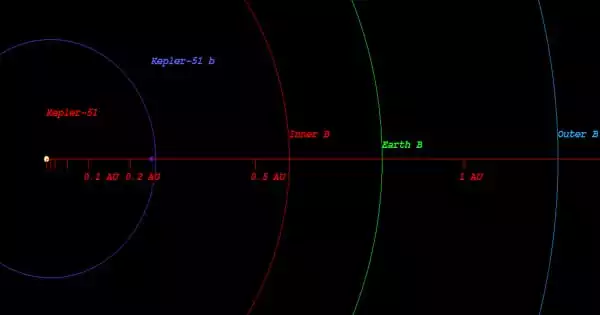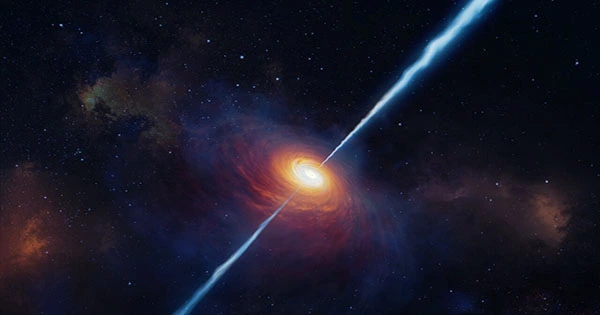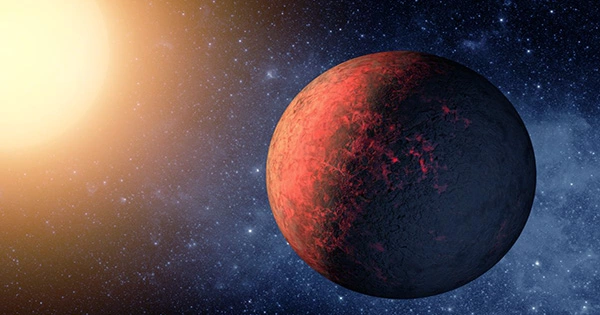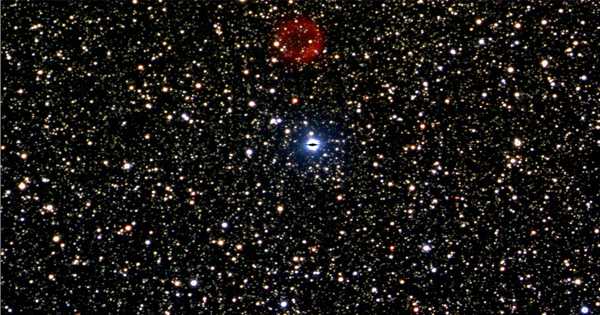Black holes aren’t what they eat; according to Einstein’s general relativity, a black hole’s exterior characteristics are determined only by its mass, spin, and electric charge. All other information regarding its diet vanishes. The no-hair conjecture is how astrophysicists refer to it.
However, there is a possible thorn in the conjecture’s side. Black holes can have a strong magnetic field from birth or acquire one by eating magnetized matter. For the no-hair hypothesis to hold, such a field must vanish fast. True black holes, on the other hand, do not exist in isolation. They might be surrounded by plasma gas that is so energized that electrons have separated from their atoms, allowing the magnetic field to persist, perhaps refuting the hypothesis.
Researchers from the Flatiron Institute’s Center for Computational Astrophysics (CCA) in New York City, Columbia University, and Princeton University used supercomputer simulations of a plasma-engulfed black hole to find that the no-hair conjecture holds true. Physical Review Letters published the team’s results on July 27 (2021).
According to study co-author Bart Ripperda, a research fellow at the CCA and a postdoctoral researcher at Princeton, “The no-hair conjecture is a cornerstone of general relativity.” “The no-hair hypothesis is broken if a black hole possesses a long-lived magnetic field. Fortunately, plasma physics provided a solution that prevented the no-hair hypothesis from being disproved.”
The team’s simulations revealed that the magnetic field lines surrounding the black hole soon break and rejoin, resulting in plasma-filled pockets that either collapse into the black hole’s maw or rocket into space. According to the researchers, this mechanism rapidly drains the magnetic field and might explain flares seen around supermassive black holes.
“Theorists didn’t think of this because they usually put their black holes in a vacuum,” Ripperda says. “However, plasma is common in real life, and plasma may both maintain and bring in magnetic fields. And it needs to be consistent with your no-hair hypothesis.”
Ripperda collaborated on the work alongside Ashley Bransgrove, a Columbia graduate student, and Sasha Philippov, a CCA associate research scientist who is also a visiting research fellow at Princeton.
According to a 2011 research on the subject, the no-hair hypothesis was in jeopardy. That research, on the other hand, only looked at these systems at a low resolution and regarded plasma as a fluid. The plasma around a black hole, on the other hand, is so diluted that particles seldom collide, thus describing it as fluid is an oversimplification.
The researchers used a general-relativistic model of a black hole’s magnetic field to run high-resolution plasma physics simulations in the current study. All of the calculations required a total of 10 million CPU hours to complete. “We couldn’t have done these simulations without the Flatiron Institute’s computational resources,” Ripperda says.
The simulations that resulted demonstrated how the magnetic field surrounding a black hole changes over time. The field stretches in an arc from the black hole’s north pole to the south pole at first. The field then expands outward due to interactions inside the plasma. The field splits into separate magnetic field lines that radiate away from the black hole as a result of this opening up.
The field lines move in opposite directions, toward or away from the event horizon. Magnetic field lines near one other link, forming a braided pattern of field lines that come together and split away. A gap exists between two such connecting sites, which fill with plasma. The magnetic field energizes the plasma, which then launches outward into space or inside into the black hole. The magnetic field loses energy as the process progresses, finally withering away.
Most importantly, the procedure is quick. The black hole’s magnetic field is depleted at a rate of 10% the speed of light, according to the researchers. “The fast reconnection saved the no-hair conjecture,” Ripperda says.
The balding process found in the simulations might explain the mechanism driving reported flares from the supermassive black hole at the heart of the Messier 87 galaxy, according to the researchers. Initial comparisons between them are promising, they say, but a more thorough evaluation is required. If they do match up, powerful flares near black hole event horizons powered by magnetic reconnection might be a common occurrence.
















